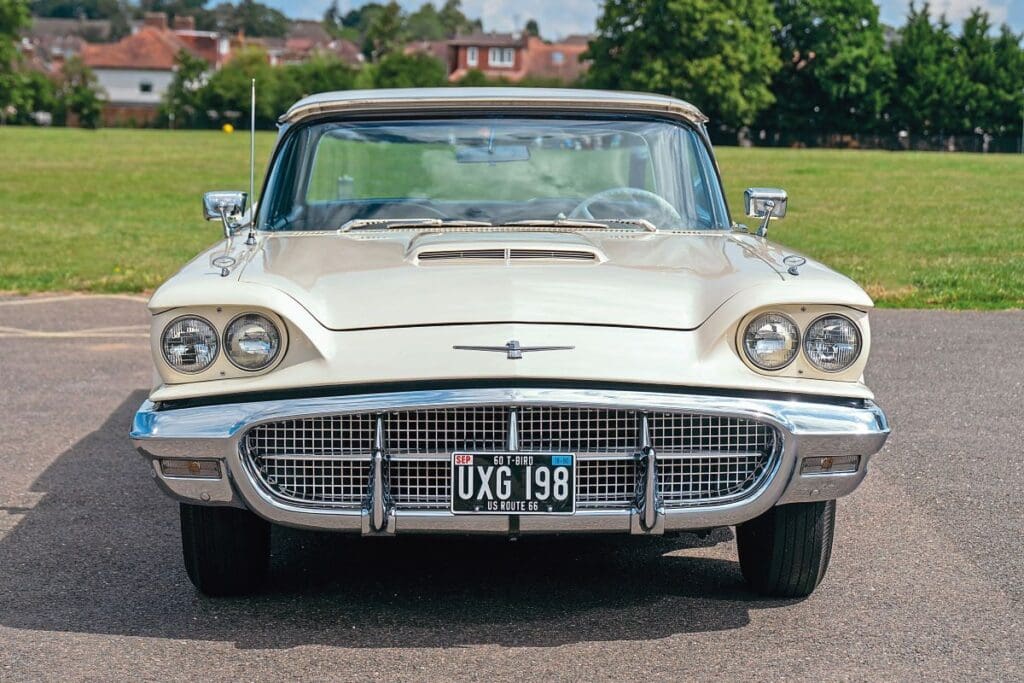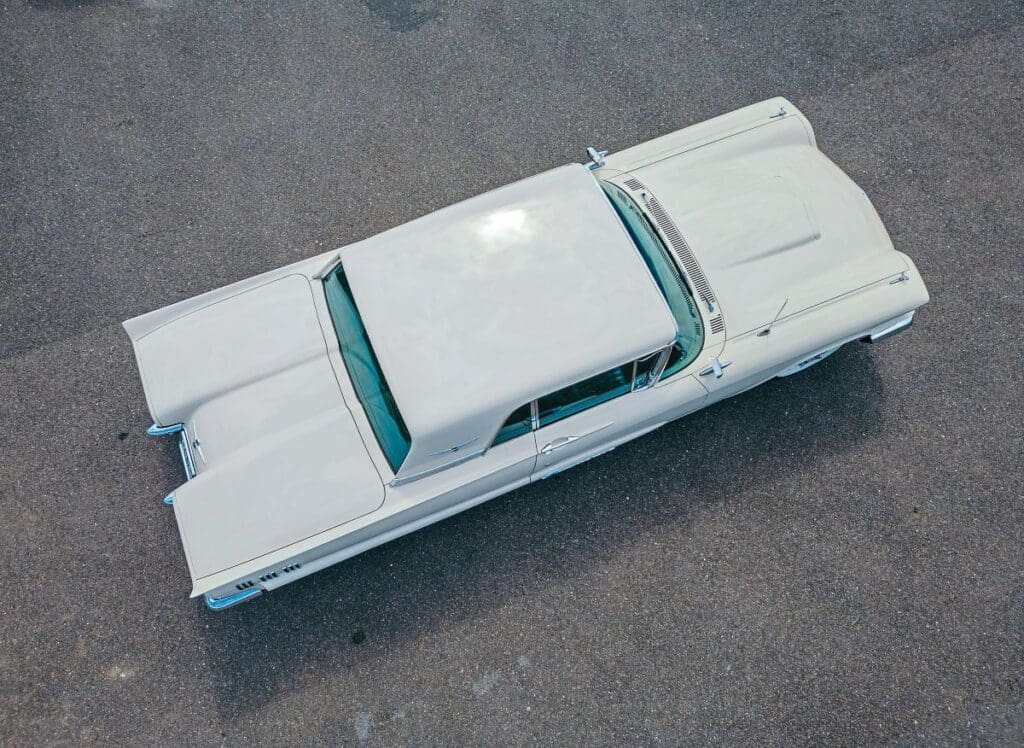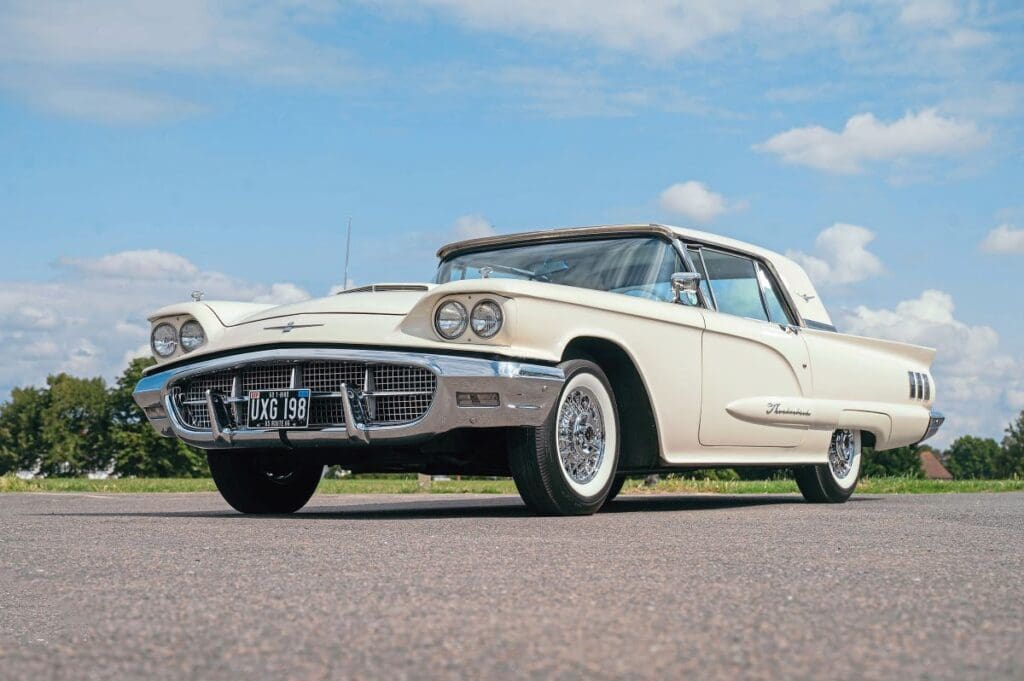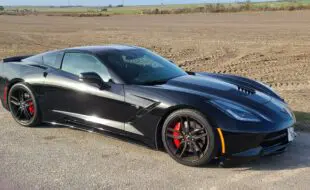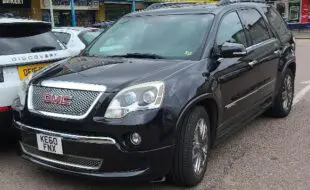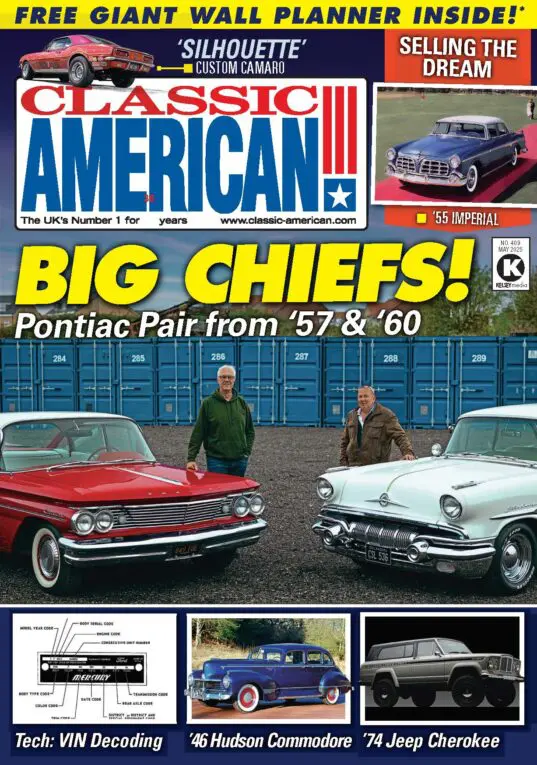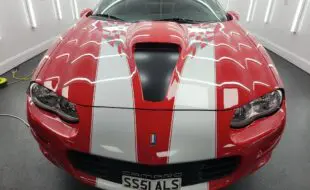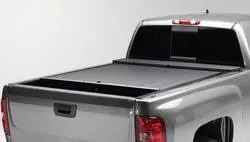This fabulous 1960 Thunderbird is a rare, low-mileage survivor that’s almost completely original – which is exactly how owner Peter Reynolds intends to keep it.
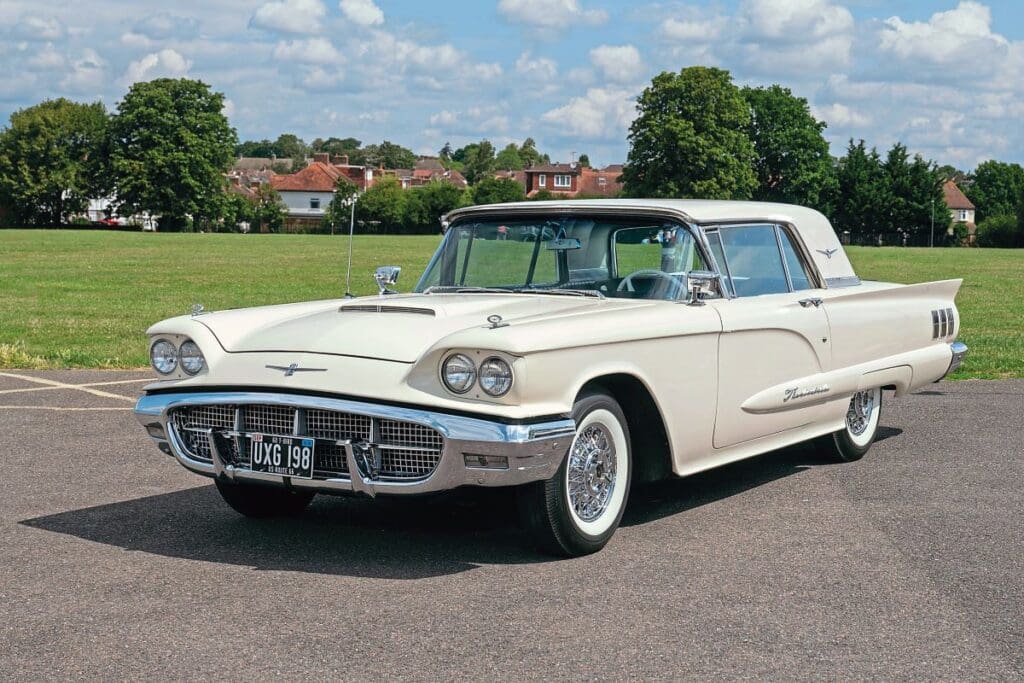
Words: Mike Renaut Photography: Matt Richardson
Peter Reynolds hadn’t been planning on owning a Thunderbird until he saw this 1960 coupe at the Rally of the Giants in 2006. “It was in great original condition,” he remembers, “with genuine, low mileage. But it wasn’t for sale. Sometime later, I met the owner Steve Taylor and we became friends. I asked if he’d consider selling the Thunderbird. It turned out he already had…”
Steve put Peter in touch with the buyer, but the car had changed hands again. “I spoke with that owner and, remembering the previously immaculate condition of the car, in September 2010 my wife Annette and I took a long train journey to buy it.” But the Thunderbird clearly hadn’t been taken care of. “The owner’s kids had been climbing over it, the outside was filthy and under the seats were empty Coke cans. If it hadn’t been such a long way from home, I’d have walked away,” admits Peter. “On the drive home, it was all over the road. I put it in the garage for a week until I could face it.” Once thoroughly cleaned, the Thunderbird looked much better. “It was on cross-ply tyres with only 12psi in them; it drove really well once that was sorted out.”
Enjoy more Classic American reading in the monthly magazine.
Click here to subscribe & save.
Peter’s always been into American cars: “When I was a kid, I loved them; they were just so flamboyant. My first was a white, right-hand drive 1963 Pontiac Parisienne; I’ve never forgotten the numberplate – 520 HYU – it’s probably long gone now.” Peter later owned a 1969 Mustang Grande, then in 1976 bought a 1966 Buick Riveria Gran Sport; impressively, that’s a car he still owns today.
The Thunderbird came with paperwork showing it spent the late Nineties in Montana with a couple called Ronald and Wendy Beye before coming to the UK in 2004. Options included Magicaire heater, radio, windshield washer, power-brakes, -steering and -windows, four-way power seat, outside mirrors, backup (reversing) lights and whitewall tyres. With $73 of transport charges from the factory to the dealership that upped the cost from $3755 to $4669.
The Thunderbird was built in the Wixom, Michigan, plant where all ’Birds were constructed alongside Lincolns. According to a factory build sheet which has somehow remained with the car, it was born on September 8, 1960. Yet there’s a 12W (September 12) build date on the data plate because although 1960 Thunderbird production was due to end on September 13, they were ahead of schedule, so the last cars were finished on the 9th – data plates were always stamped in advance. The production number makes it a little over one of the last 400 built.
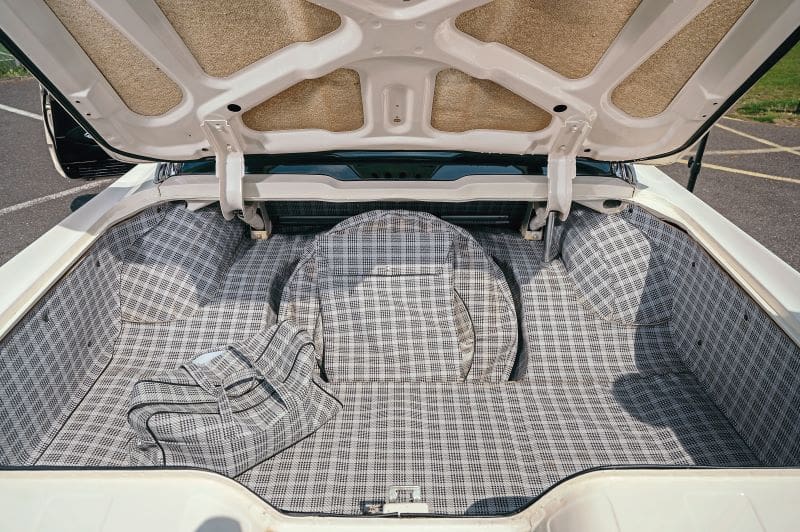
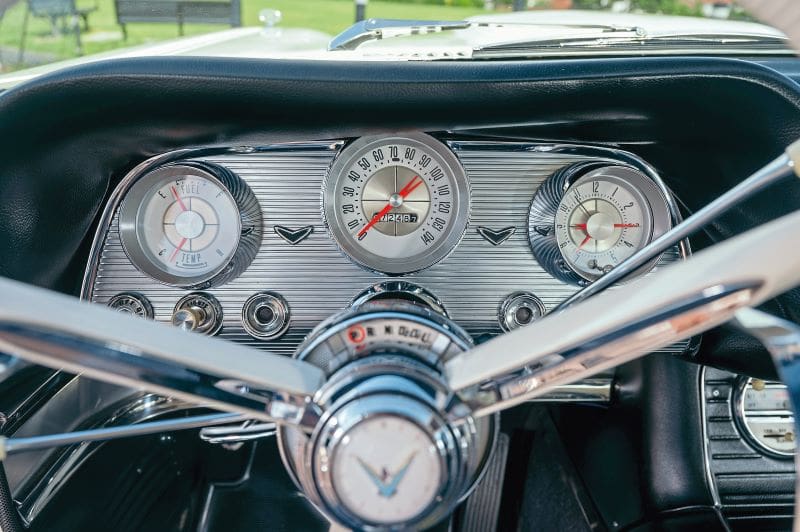
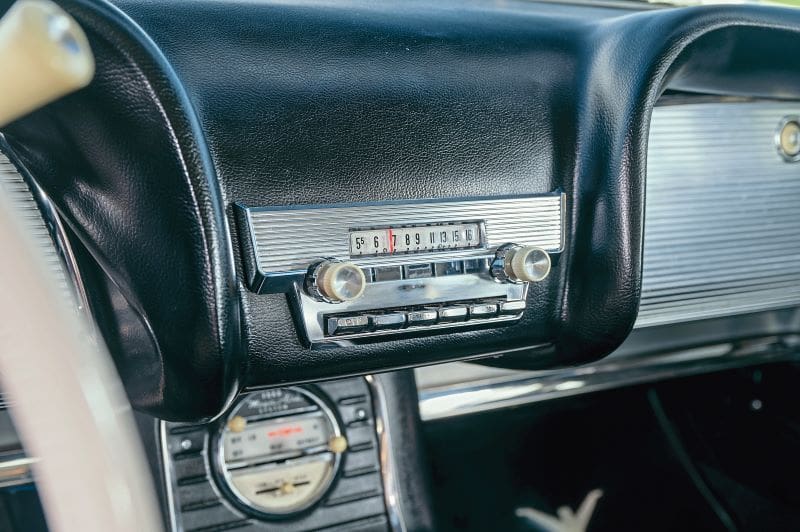
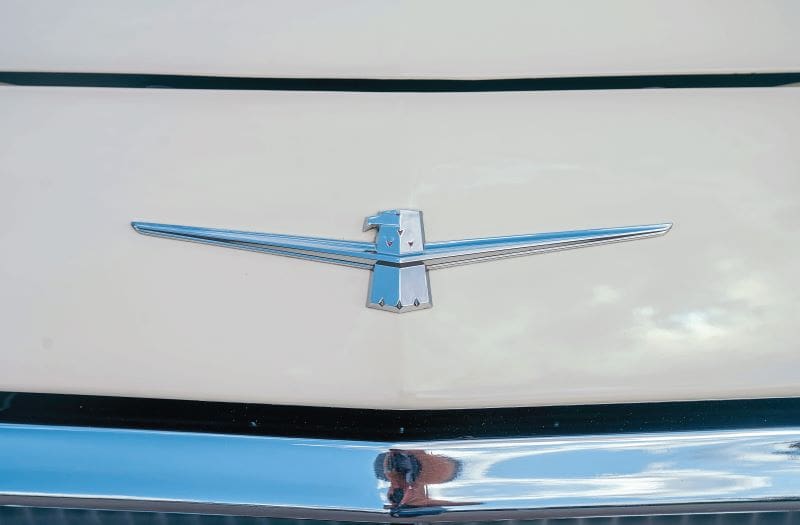
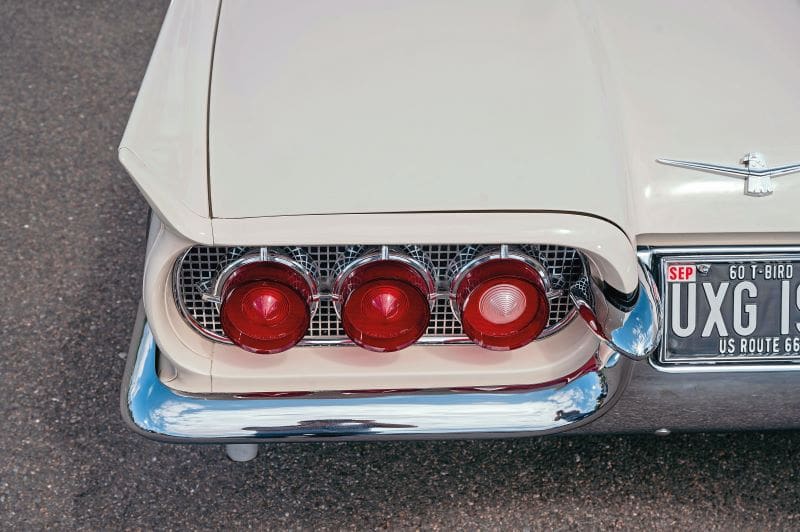
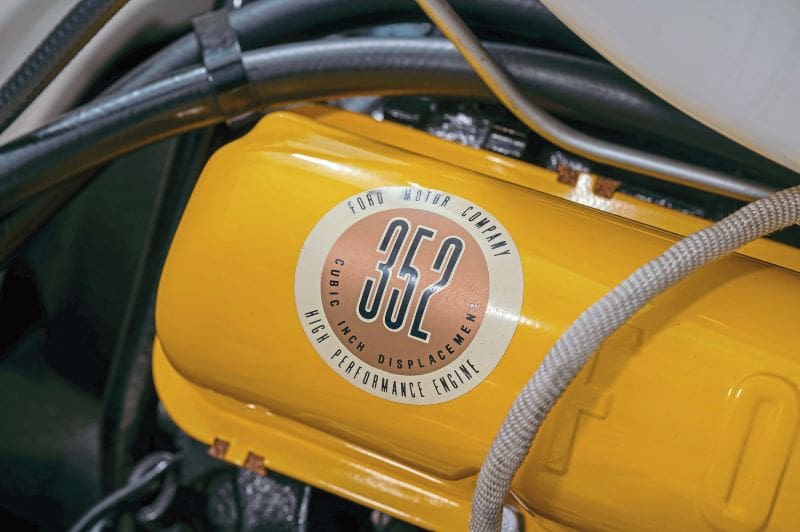
Two Becomes Four
There was a certain amount of despair among sports cars enthusiasts when the 1958 Thunderbird was unveiled; it had four seats. But Thunderbird was never intended to be a sports car – Ford branded it a luxury car. Developed in 1953 as a rival to Chevrolet’s Corvette the original two-seater debuted in 1955, but over a month before the unveiling Ford had already decided to build a four-seater T-Bird. At one point there was even a four-door prototype. Knowing there was far more of a market for a sporty four-seater, Ford invested over $40 million in its development. Their all-new design featured monocoque (no separate chassis) construction using 8000 spot welds, while the double-walled bodyshell was 56% more rigid between the axles than the previous two-seater, helped by a massive transmission tunnel that allowed a very low profile. That 52in-high roof was some eight-to-ten inches lower than most rivals. The tunnel was turned into a styling feature by housing heater and air conditioning controls along with power window switches, radio speaker and ashtrays.
Initially, the new Edsel engines were to be used, but Ford preferred to keep Edsel exclusive, so Thunderbirds got a new 352cu in V8 (Edsel had theirs over-bored to 361). Transmission choices were a three-speed manual, with optional overdrive, and a dual-range Cruise-O-Matic auto with the usual park, reverse, neutral and low gears, a D2 for normal driving (and pulling away in second gear), plus a D1 for performance shifting. Although the V8 put out 300bhp, evidently half of that was absorbed by the automatic gearbox. Power at the wheels was just 145bhp, but 0-60mph took ten seconds dead and top speed was 115mph.
Out back the coil springs were a holdover from an initial plan to offer airbag suspension all-round that was cancelled at the eleventh hour. This meant trailing arms with shocks at the rear end sitting on a live rear axle. Ford engineers insisted on a Panhard rod and torque arms in an attempt to quell wheel hop. The new Edsel grabbed many headlines and Thunderbird received generally favourable comments when it was unveiled on New Year’s Eve at the Thunderbird Golf Club in Palm Springs. Production started December 20, 1957, at Wixom, with sales commencing in early 1958 and the coupes were joined by a convertible model that June.
In Britain, Motor Sport magazine tested a £3201 Thunderbird (when a Jaguar cost around £1800) quickly growing to love its many power accessories, noting “the V8 runs in commendable silence” and that, “from zero to 100mph acceleration is, to put it mildly, vivid.” Ford sold 37,892 Thunderbirds for the 1958 model year (convertibles numbering 2134) almost double that of any previous year.
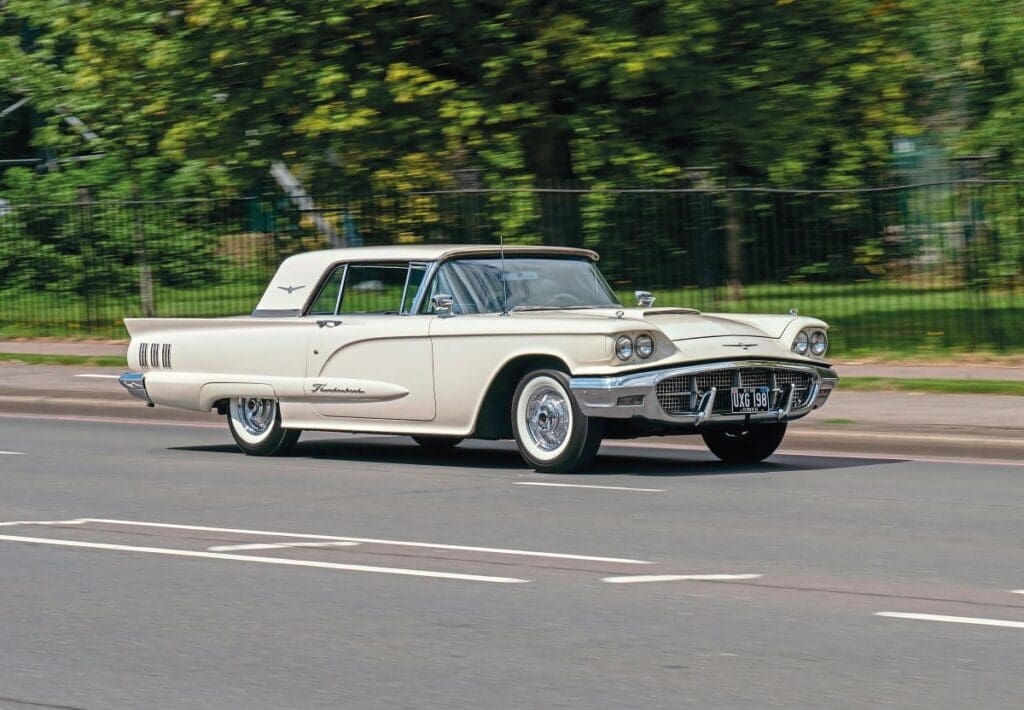
Don’t Mess with Success
The 1959 Thunderbird was little changed when it debuted on October 27, 1958. Grille, taillight and door trim were obvious differences, but the rear axle was now suspended on traditional leaf springs. Under the hood for an extra $177 you could now get the 350bhp Lincoln 430cu in V8 (though only with automatic transmission) while carburation was revised, as was the ignition system. Leather seats became an option and instrument dials were now white, not black. Updates were minimal enough that the sales brochures used several of the previous year’s photos suitably retouched.
With 67,456 new ’Birds (including 10,262 convertibles) finding homes in 1959, Ford saw no reason to mess with the 1960 Thunderbird; besides, its three-year model cycle was almost at an end and there was an all-new 1961 T-Bird on the way. Ford showrooms were buzzing about the new Galaxie and Falcon, while the Edsel was getting quietly killed off, but Thunderbird was still Ford’s glamour model. Introduced on October 8, 1959 there were again updates to grilles (three teeth on a bar mounted on the same square mesh used in the 1957 car) and badges, two extra taillights were added, the brakes were slightly enlarged, an anti-glare rearview mirror was now standard and seat pleats became vertical not horizontal.
Designers had wanted to incorporate the Skyliner’s retractable metal roof, but it proved too expensive with the too-short trunk lid. Instead, Thunderbird became the first post-war American car offered with optional sunroof. A manually operated steel sliding panel taking up half the roof, the $212.40 Golde Top was named for the Golde company that owned the patents. It had received approval after Ford personnel took a 1959 prototype on the test track and noted they could light a match with the roof open and it didn’t get blown out by turbulence… Of the 92,843 Thunderbirds sold for 1960 (a record high that wouldn’t be exceeded until 1976,) just 2536 were sunroof cars and 11,860 were convertibles.
Engine options were repeated for 1960 with the $242 Cruise-O-Matic optioned by 98% of buyers, including those of our Corinthian White feature car, which is powered by the 300bhp, 352cu in Interceptor V8.
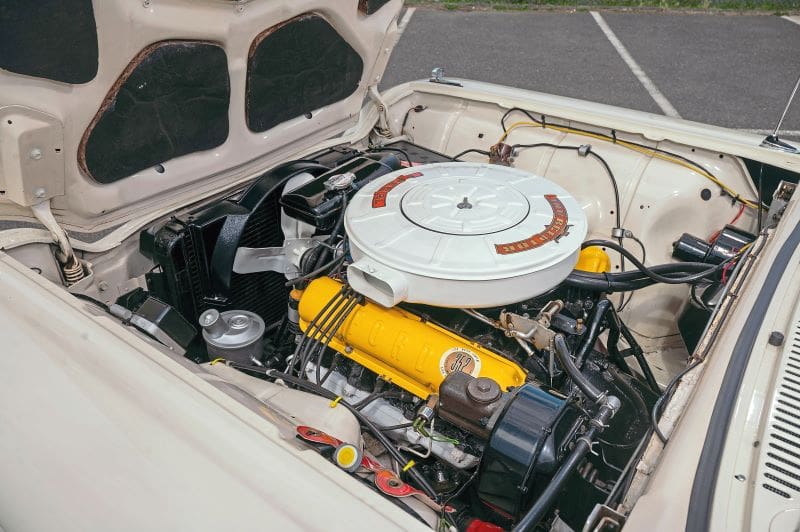
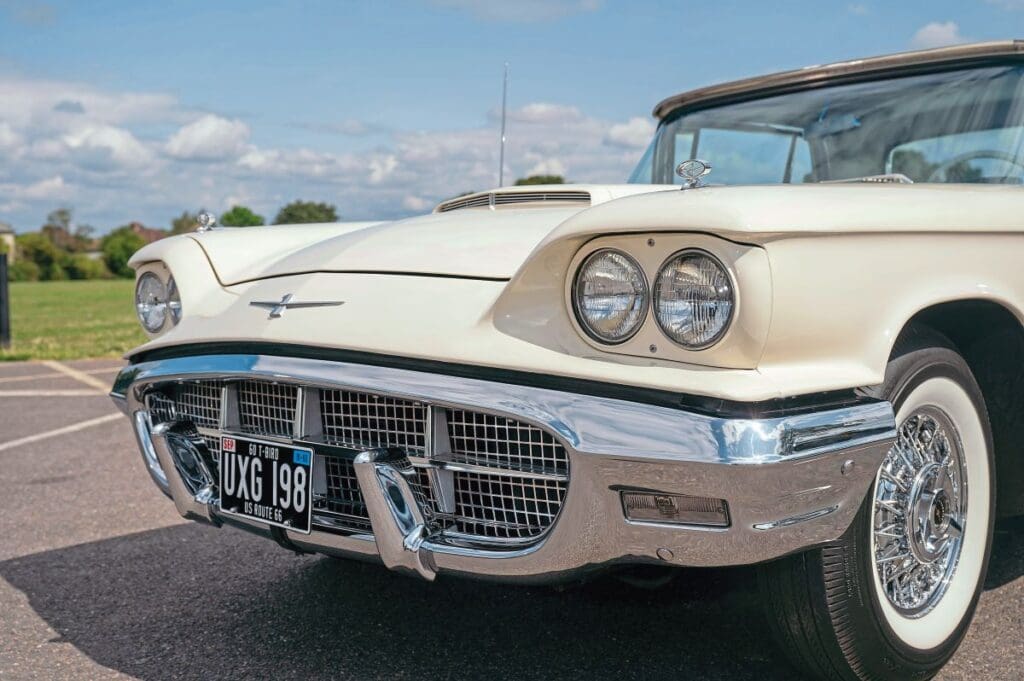
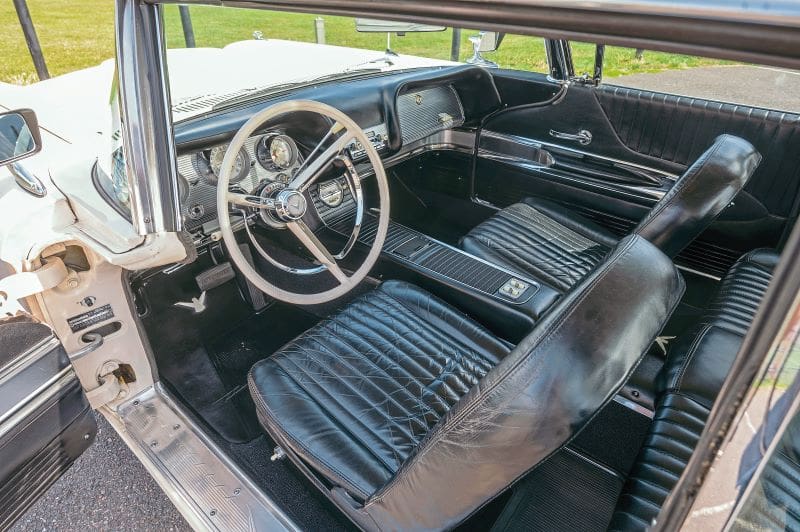
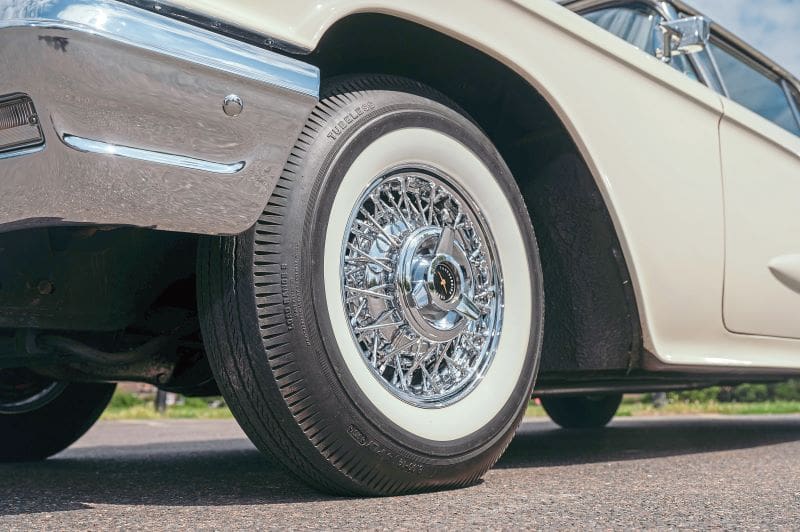
Brake Check
“It’s really been looked after,” says Peter. “I was surprised to find out it wasn’t previously restored. When I checked the brakes, it still had the original shoes on the rear axle and they were barely worn. That’s due to the low mileage, just 22,900 miles showing when it arrived in the UK and it currently has 33,700. The exhaust started blowing so I had a new system made by Frost Autos in Northampton (www.frost.co.uk) and they shipped it down to American Auto Parts (www.americanautoparts.co.uk/Tel. 01737 780888) who helped me fit it. Although the exhaust was supplied with a complete fitting kit, we were able to re-use most of the original mountings including the rear straps.”
Peter has done various small jobs to his ’Bird: “I’ve put on a new steering ram, upper control arm and idler arm bushes, replaced the fuel pump, added a Pertronix ignition, done some small electrical repairs and fitted Gaz adjustable shocks all around to get the rear end a little less bouncy on the motorway.” Under the bonnet, various components have been powder-coated, but Peter’s been careful to keep the colours authentic; yes, valve covers were indeed bright yellow on the 1960 cars – an interesting contrast to the dark blue engine block. But Peter’s loath to make changes if he doesn’t have to: “It’s still got vacuum windscreen wipers – I don’t ever drive in the rain – and I’ve retained the original dynamo. The original radio still works too, but it takes about 30 seconds for the valves to warm up.”
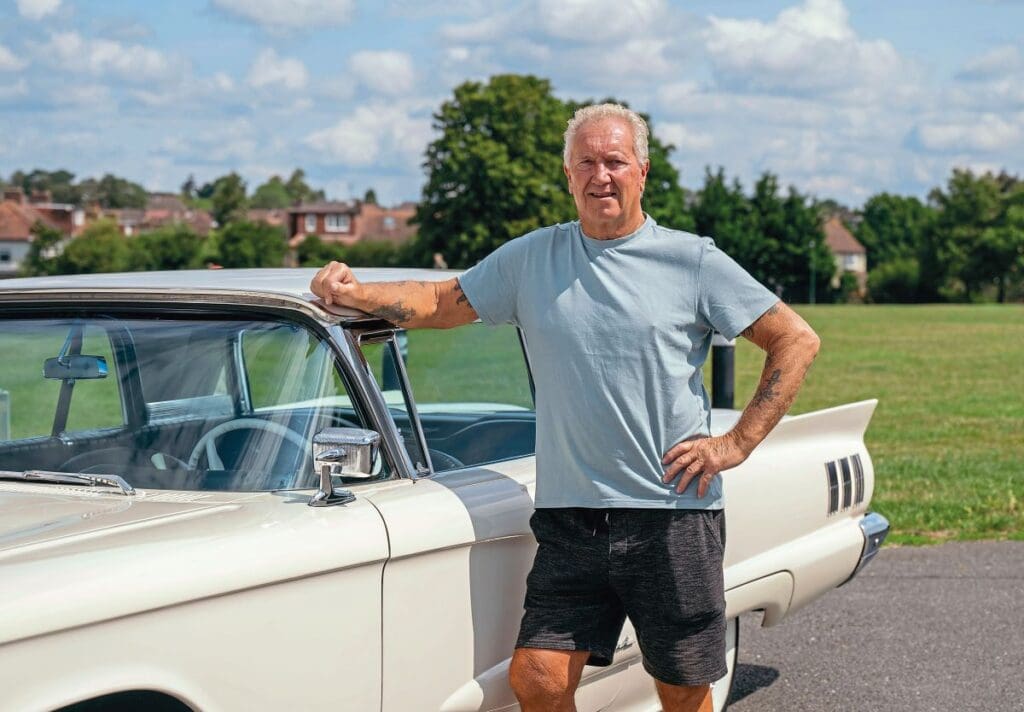
He makes allowances for the Kelsey Hayes wire wheels from a slightly newer model: “It came with them and I just think it looks great on the wires – although they take hours to get clean after a drive.” Because this is a classic that gets driven, “I’ll take it out on nice days just for exercise and to car shows within about a hundred miles or two hours of home. It’s a great cruiser, but it also has plenty of torque for motorways. The interior is great; it still smells like proper old leather.
“I’ve no plans to ever sell my Thunderbird,” adds Peter. “Although I like the two-seater cars, they cost an arm and a leg. Even though it’s the four-way adjustable electric one, I still wish the driver’s seat went back a little further because it’s a tight fit, but that’s how they were. This car’s survived all these years and once you start altering things it’s never original again.”
